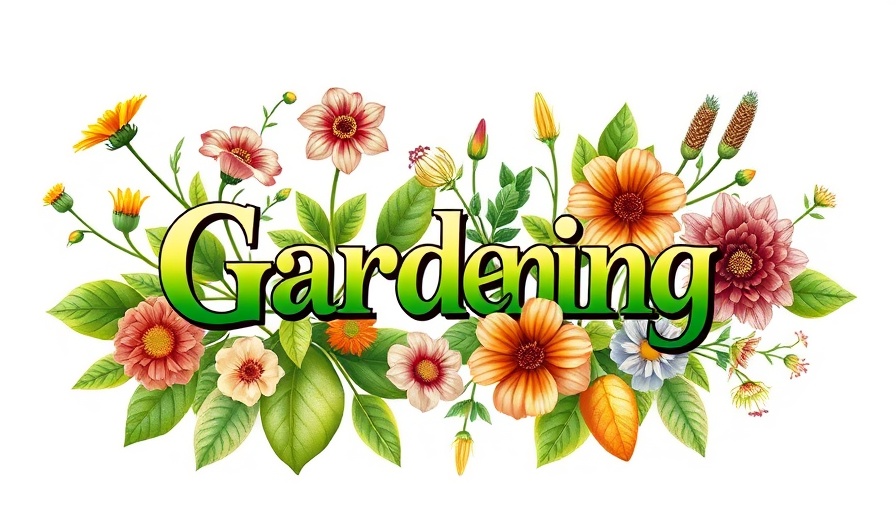
Understanding Why Your Bell Peppers Are Small
Many gardeners, whether seasoned or newbies, often ask, "Why are my bell peppers so small?" This seemingly simple question can lead to a labyrinth of potential solutions. After years of nurturing my pepper plants, I can say with confidence: several critical factors dictate the size of bell peppers. If you’ve been struggling with modest-sized fruits, fear not! With a little care and attention, you can enhance your harvest.
Ideal Conditions for Thriving Bell Peppers
Getting your bell peppers to flourish begins with understanding their ideal growing conditions. Here’s what you need to ensure:
- Temperatures: Bell peppers thrive in warm conditions. They do best when planted after the last frost, with nighttime temperatures above 50°F (10°C).
- Sunlight: Ensure your peppers receive at least 6 to 8 hours of full sunlight each day.
- Soil Quality: Use well-draining soil, preferably pH balanced between 6 to 6.8. Consider testing your soil to address any deficiencies.
Eight Common Reasons for Small Bell Peppers
So, what could be holding back your bell peppers from reaching their full potential? Here are eight reasons that might explain the smaller-than-expected fruits, along with solutions to help address them:
1. Timing Is Everything
The time of planting plays a crucial role in pepper growth. Early planting allows your plants to mature before the flowering phase, leading to robust growth and larger fruit. Aim to plant as soon as the conditions allow in your zone, as pushing the season can result in smaller yield.
2. Pollination Problems
Poor pollination can lead to nutrient deficiencies, resulting in misshapen or tiny bell peppers. Peppers are self-pollinating, so they benefit from a gentle shake or breeze to help distribute pollen within the flowers. For optimal pollination, ensure temperatures remain between 60°F and 70°F (15°C - 21°C).
3. Overcrowding Issues
Planting your peppers too close together can lead to competition for resources, resulting in stunted growth. Make sure to adhere to planting guidelines of spacing your plants 12 to 18 inches apart to promote airflow and nutrient access.
4. Water Wisely
Inconsistent watering can wreak havoc on your bell pepper plants. Both under and overwatering can lead to stress, ultimately impacting fruit size. Aim for consistent moisture, ensuring the soil is damp but well-draining.
5. Nutrient Deficits
Adequate nutrition is vital. If your soil lacks essential nutrients—such as nitrogen, potassium, and phosphorus—your peppers may not grow to full size. Use a balanced fertilizer, and consider organic options like compost or aged manure to enrich your soil.
6. Temperature Extremes
Extreme temperatures—both too hot or too cold—can stress plants, leading to stunted growth. Protect your peppers during unexpected cold snaps and provide shade during heat waves to create a stable growing environment.
7. Pests and Diseases
Always inspect your plants for signs of pests like aphids or diseases that may be drawing energy away from your fruits. Utilize integrated pest management techniques, including natural repellents and encouraging beneficial insects.
8. Pruning Techniques
Sometimes, less is more. Strategic pruning of your bell pepper plants could help direct energy towards fruit production instead of excessive foliage. A balanced approach to pruning can often yield larger and healthier peppers.
Taking Action for Bigger Bell Peppers
Becoming proactive with your gardening practices can transform your bell pepper yield. Start by addressing each of the above causes, and tailor your practices to meet the needs of your plants. From improving soil conditions to ensuring proper spacing and care, every adjustment can lead to significant improvements in fruit size and quality.
Conclusion
By understanding the challenges affecting your bell pepper growth, you can set up your garden for success. Embrace these tips and make adjustments as necessary to watch your bell peppers flourish in size and flavor. Ready to dig deeper into your gardening journey? Consider seeking out local gardening clubs or online forums where you can share experiences and solutions with fellow gardening enthusiasts!
 Add Row
Add Row  Add
Add 


Write A Comment